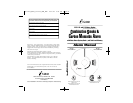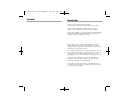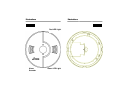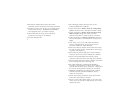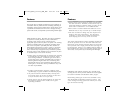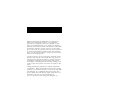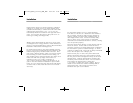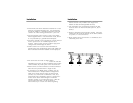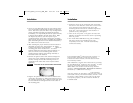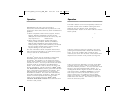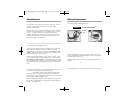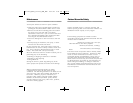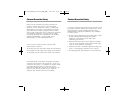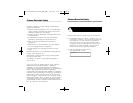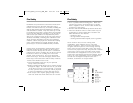
Smoke Alarm
The smoke alarm constantly monitors the air for products of
combustion that are produced when something is burning or
smoldering. When smoke particles in the smoke sensor re a c h
a specified concentration, the alarm/voice message warn i n g
system will sound, accompanied by the flashing red LED light.
NOTE: The smoke alarm takes precedence when both
smoke and carbon monoxide are present.
WA R N I N G : PLEASE READ CAREFULLY AND T H O R O U G H LY
N F PA Standard 72 states: Life safety from fire in re s i d e n t i a l
occupancies is based primarily on early notification to
occupants of the need to escape, followed by the
a p p r opriate egress actions by those occupants. Fire warn i n g
systems for dwelling units are capable of protecting about
half of the occupants in potentially fatal fires. Victims are
often intimate with the fire, too old or young, or physically
or mentally impaired such that they cannot escape even
when warned early enough that escape should be possible.
For these people, other strategies such as pro t e c t i o n - i n - p l a c e
or assisted escape or rescue are necessary.
• Smoke alarms are devices that can provide early warn i n g
of possible fires at a reasonable cost, however, alarm s
have sensing limitations. Ionization type alarms offer a
b r oad range of fire sensing capabilities but are better at
detecting fast flaming fires than slow smoldering fire s .
Photoelectric alarms sense smoldering fires better than
flaming fires. Home fires develop in diff e rent ways and
a r e often unpredictable. Neither type of alarm
(photoelectric or ionization) is always best, and a
given alarm may not always provide warning of a fire.
• A battery powered alarm must have a battery of the
specified type, in good condition and installed pro p e r l y .
• AC powered alarms (without battery backup) will
not operate if the AC power has been cut off, such
as by an electrical fire or an open fuse.
• Smoke alarms must be tested regularly to make sure
the batteries and the alarm circuits are in good
operating condition.
F e a t u re s F e a t u r e s
76
• Smoke alarms cannot provide an alarm if smoke does
not reach the alarm. There f o re, smoke alarms may not
sense fires starting in chimneys, walls, on roofs, on the
other side of a closed door or on a diff e r ent floor.
• If the alarm is located outside the bedroom or on a
different floor, it may not wake up a sound sleeper.
• The use of alcohol or drugs may also impair one’s
ability to hear the smoke alarm. For maximum
protection, a smoke alarm should be installed in
each sleeping area on every level of a home.
Carbon Monoxide (CO) Alarm
The carbon monoxide (CO) alarm constantly monitors the
air for the presence of CO. It will alarm when there are
high levels of CO present, and when there are low levels
of CO present over a longer period of time (see Page 24
for alarm times). When a CO condition matches either of
these situations, the alarm/voice message warning system
will sound, accompanied by the flashing red LED light.
The carbon monoxide sensor uses an electro c hemical tech n o l o g y.
C AU T I O N : This alarm will only indicate the presence of
carbon monoxide gas at the sensor. Carbon monoxide gas
m ay be present in other are a s .
This device is designed to protect individuals from the
acute effects of carbon monoxide exposure. It will not
fully safeguard individuals with specific medical
conditions. If in doubt, consult a medical practitioner.
Installation of the device should not be used as a
substitute for proper installation, use, and maintenance
of fuel-burning appliances, including appropriate
ventilation and exhaust systems.
Individuals with medical problems may consider using
w a r ning devices which provide audible and visual signals
for carbon monoxide concentrations under 30 ppm.
Never ignore the sound of the alarm!
Determining what type of alarm has sounded is easy
with the Kidde Combination Smoke/CO Alarm. The
voice message warning system will inform you of the
type of hazard occurring.
810-1692_RevD_119-133_MAN_ENG 10/7/03 4:41 PM Page 6



